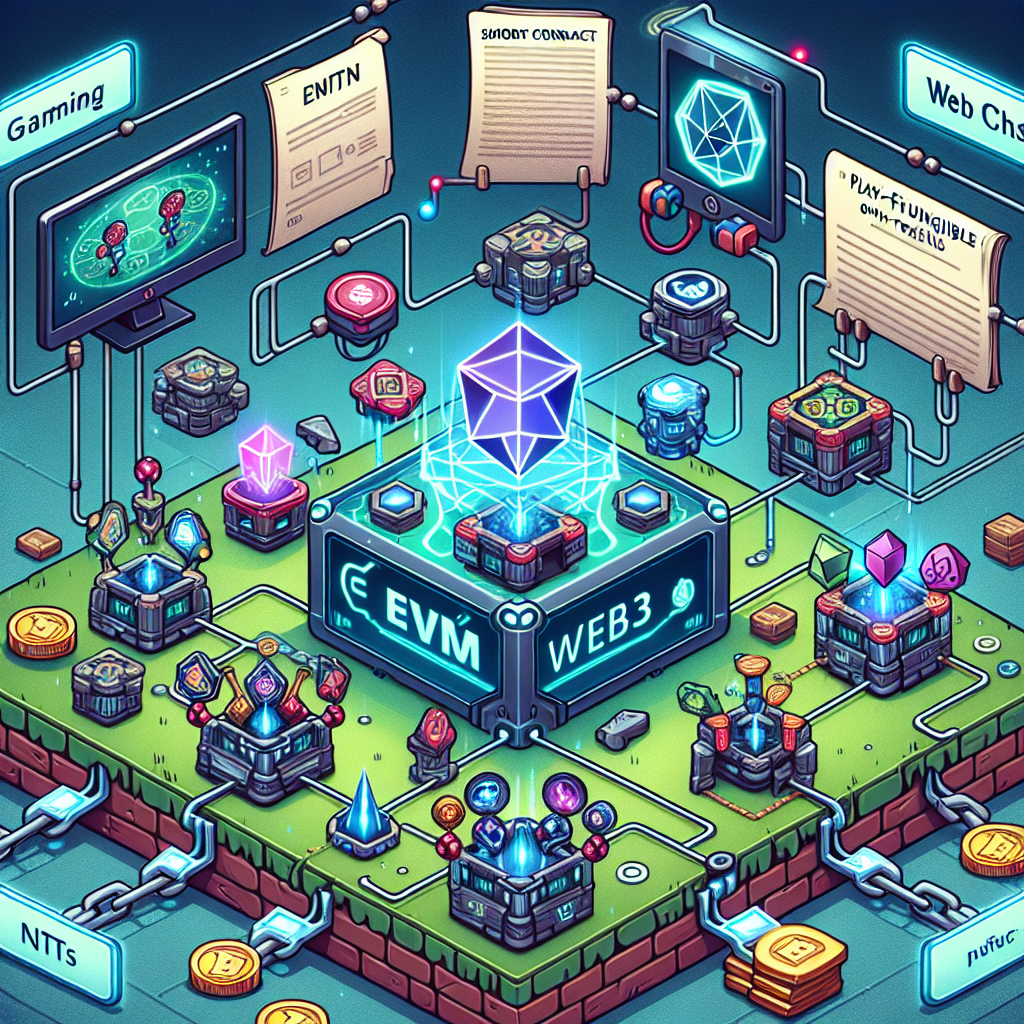The Ethereum Virtual Machine (EVM) is revolutionizing the world of Web3 gaming, transforming the way games are played, how players interact, and how virtual assets are owned and traded. Whether you’re a casual gamer or a tech enthusiast, understanding EVM gaming is crucial in today’s digital landscape.
Understanding Ethereum Virtual Machine (EVM)
To grasp the concept of EVM gaming, it’s essential to have a basic understanding of the Ethereum Virtual Machine. The EVM acts as the engine that powers applications on the Ethereum blockchain. It interprets smart contracts, which are self-executing contracts written in code, governing transactions, asset ownership, and interactions within digital realms.
The EVM ensures that these contracts run transparently and reliably across all blockchain nodes, ensuring fairness and consistency.
How Does EVM Gaming Work?
Imagine playing a video game where the rules and ownership of in-game items are controlled transparently by code running on a blockchain, rather than a central authority. This is the essence of EVM gaming. Here’s how it works:
- Smart Contract Execution: Every action you take in the game triggers a smart contract, which contains predefined rules written in code. This ensures that the outcomes of your actions are automatically updated on the blockchain, making gameplay more equitable.
- In-Game Asset Ownership (NFTs): In EVM gaming, digital items like rare swords, limited-edition skins, and powerful characters are tied to your wallet through Non-Fungible Tokens (NFTs). This means you truly own these items and can trade, sell, or hold onto them as collectibles.
- Decentralized Game Logic: Game rules are coded into smart contracts on the blockchain, shared across the network, giving players more control over the gaming experience and ensuring fairness.
- Player-Owned Economy: EVM gaming turns gameplay into a participatory economy, where in-game items and currencies are NFTs or tokens that can be traded, sold, or used across different games, making the gaming experience more rewarding.
Challenges and Solutions in EVM Gaming
Despite its potential, EVM gaming faces challenges such as computational constraints and high fees. To address these issues, developers are exploring solutions like Layer 2 Scaling, EVM-Compatible Chains, Hybrid Models, and advanced tooling to streamline smart contract deployment and enhance gameplay.
Examples of Popular EVM Gaming Platforms
Several platforms have successfully leveraged EVM to deliver unique gaming experiences, including Immutable zkEVM, Polygon, and Avalanche, offering scalability, affordability, and high-performance gaming environments.
Interoperability and Cross-Game Experiences
One of the unique strengths of EVM gaming is interoperability, allowing assets created in one game to be used in another. However, challenges remain in standardizing asset formats and ensuring functional compatibility across different game worlds.
The Future of EVM Gaming
The future of EVM gaming looks promising as developers continue to innovate and make games more scalable and user-friendly. Regulatory clarity remains a hurdle, but EVM gaming is poised to redefine ownership, interaction, and value in digital spaces.
Whether you’re a gaming enthusiast, a tech professional, or someone interested in digital assets, EVM gaming offers a unique and valuable experience that is shaping the future of gaming in the digital age.

